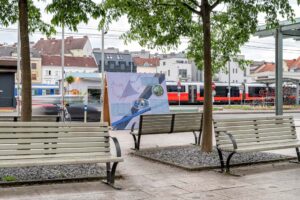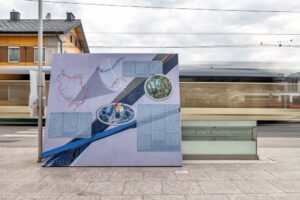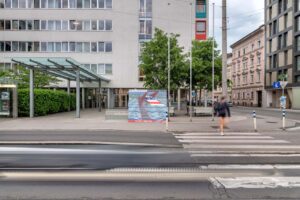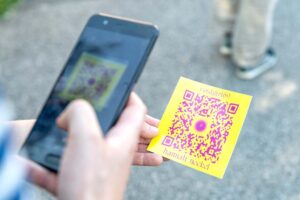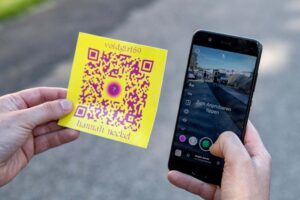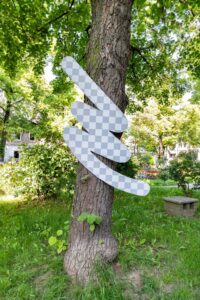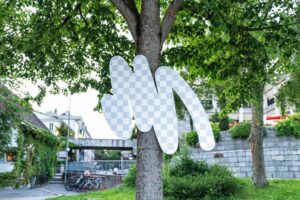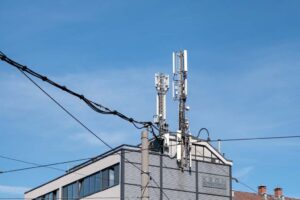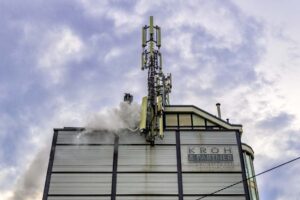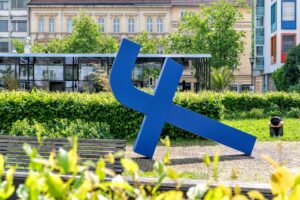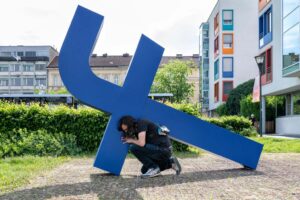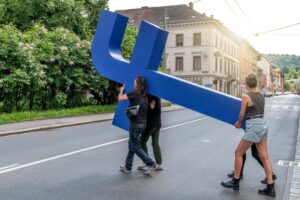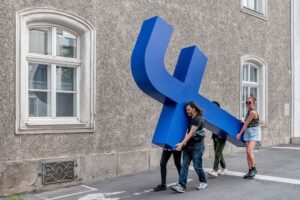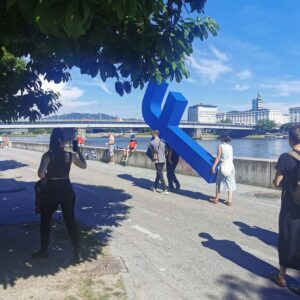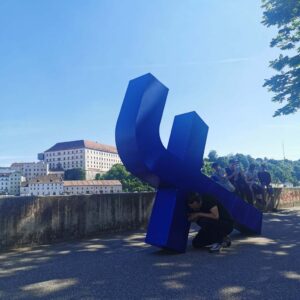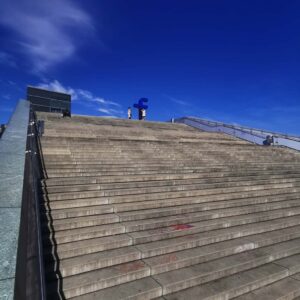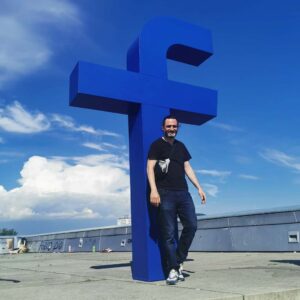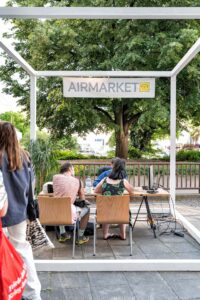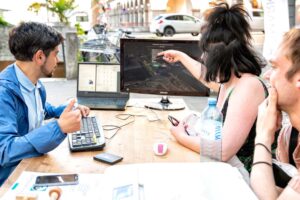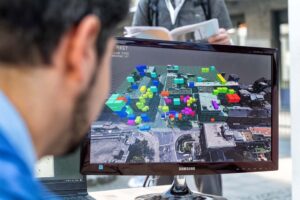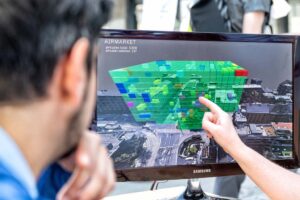Island of foam version XIII
Stephanie Lüning (DE)
The series Island of foam is a wonderfully messy affair, using a foam machine connected to differently colored water tanks to create an island of foam. The island fades away and is periodically renewed, allowing visitors to see the process in action.
Lüning’s works are process-oriented and move between total control during an experimental setup and absolute surrender to the initiated process itself. Among other things, she experiments with colored foam, soap bubbles, and blocks of ice, examining bodies of water for their formative peculiarities, leaving chance to play a significant role in the artistic process.
In her temporary work, colored foam measures spill over the entire roof, leaving behind ephemeral color sculptures.
Stephanie Lüning (* 1978) is a German painter and sculptor. She completed an apprenticeship as a type and graphic painter, then studied at the Dresden University of Fine Arts and graduated in 2012 with a diploma and an excellent master student certificate. She currently lives and works in Dresden and the United States.
Lüning explores the genre boundaries of painting in her works using a variety of materials and unusual media. Through her work, the process of creating a painting or a sculpture becomes visible.
She has exhibited her work in various museums including Staatliche Kunstsammlungen Dresden, Museum Wspolczesne Wrocław, Galerie Gebrüder Lehmann in Dresden, and Hammond Harkins Galleries in Columbus, Ohio.










